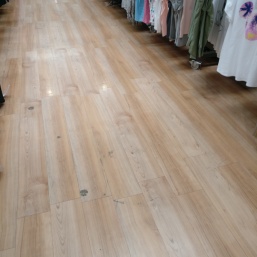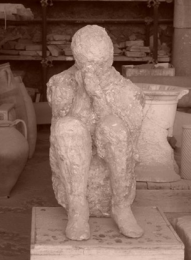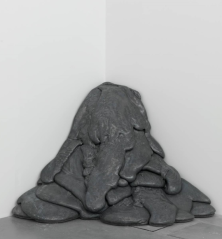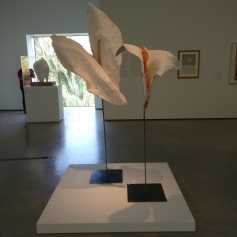
Our first art adventure since February was a trip to Tate Liverpool and their ‘Constellations’ exhibition is AMAZING.
The series presents works by how they relate to each other rather than by individual artist, movement or chronologically. Each ‘constellation’ has a central piece of art that acts as a ‘trigger’; connecting the themes and relationships between other pieces. Alongside each constellation is a word cloud showing a visual representation of the common themes across the series of pieces.

In some ways this reminded me of the Glenn Ligon exhibition at Nottingham Contemporary a few years ago which showed Ligon’s work alongside the pieces that had inspired his art. It offered a fresh perspective and opportunity to see a broader range of work, bringing to life the artists’ process rather than reducing it to a step-by-step/do it for the next grade ‘formula’.
One of the most challenging things I find teaching GCSE art is supporting pupils to make links between ideas, artist and artworks and in many ways I think these skills are central to the whole qualification. I want to see if I can use the idea of ‘constellations’ to explore different ways of creating topics and allow pupils to articulate connections between work – making connections less obvious and yet more tangible.
With this in mind, I’ve created my own constellation using Rachel Whiteread’s ‘Ghost’ as a trigger in what I think has turned into an exploration of ‘memory’. Feel free to let me know what you think and how your own constellations might look.
Rachel Whiteread – Ghost 1990
I chose this for my trigger as Whiteread’s work provokes quite an emotional response from me. The piece is a cast of the interior of a room. It is not a representation of the room, it is the essence of the room. Everything that was the room, everything that happened there, the memories of the room, are contained, captured, the space of the room is frozen in time. Whiteread has described it as causing ‘the viewer to become the wall’ and I find this fascinating. It makes me consider whether a room is the walls and features, or is it about what goes on within the space? Is the ‘Ghost’ that of the room or is it the viewer, removed from the memory of the space?
Pompeii casts
The haunting casts of the negative space left by a physical form of the bodies that perished during the eruption of Mount Vesuvius in 79AD. As Whiteread has created a room that renders the viewer as part of that room, the ash surrounding the bodies bore witness to the creation of a space that has now been revealed.
Antony Gormley – Concrete Works: Sense 1990-93
As the casts in Pompeii were taken from the negative space left from decayed bodies, Gormley creates the negative space of a crouched body within a cube. It is a representation of the space the body takes up; the viewer sees indications of the void within.
Herculaneum restoration

The town of Herculaneum was destroyed during the same eruption of Mount Vesuvius that saw for Pompeii however many of the organic materials in Herculaneum have been preserved including wooden beams, doors and window frames. The burnt timbers capture a moment in time. They appear timeless in their place and have been preserved in their position with wire and through conservation.
Mona Hatoum – Remains of the Day 2016−18
Everyday objects have been covered with chicken wire before they have been burned. The resulting pieces are reminiscent of sudden events such as the eruption of Vesuvius or an atomic blast, leaving behind common, domestic artefacts as they stood in one moment. The wire prevents the charred remains from disintegrating, however unlike the beams of Herculaneum they have been preserved before they have been burned. Elements that would have fallen and been discarded are trapped in their positions like they are a trapped memory, shadows of their previous form and are perhaps more akin to the negative forms left in the ash at Pompeii.
David Nash – Pyramid, Sphere, Cube 1997-98
These shapes appear frequently across David Nash’s work and I find we use them a lot in school projects. On a basic level the simplicity gives pupils something relatable and achievable to base their work on, but there’s something deeper to dig into and that’s why I’ve chosen them as part of my constellation. The representation of space, movement and matter connects with the thread of time and memory through the constellation, alongside the more obvious link with burnt materials. Nash talks about how we have a physical relationship with three-dimensional objects – we know the scale, can relate ourselves to the objects, and with two-dimensional pieces we have a mental relationship as we fill in the gaps and connect with our interpretation. This collection of six pieces combines these responses and the burning of the wood transforms a solid object into something more fragile.
Lynda Benglis – Quartered Meteor 1969, cast 1975
Whilst the ‘Pompeii’ arm of the constellation has a theme of negative space, this arm has more of a focus on creating art using the form of a space. This piece was originally created by pouring foam into the corner of a gallery before it was cast in lead. In Tate Liverpool’s exhibition this is used as a trigger for a constellation that explores materials however what struck me was the form of a piece that has captured the space in which it was created – the walls and floor of the original gallery – and is now placed in different spaces, hiding its underlying character.
Rosanne Robertson – Chasmschism 2019
This series takes plaster casts of cracks in stones to create new works. The shape of the natural form is identifiable and yet neither the stones nor the cracks are the piece. Robertson describes how the works connect ‘qualities of stone, water and other aspects of nature with our gender expressions, sexuality and identity’ and I feel that this is an evolution of the literal representation created by Whiteread’s Ghost, to the adoption of a space to create a new form in Benglis’s Quartered Meteor, into the creation of a new piece that retains the memory of it’s origin yet is not defined by that.
Richard Long – A Line Made by Walking 1967
Rather than the physical representations of objects or beings, this arm of my constellation is about the traces left behind by events. Richard Long’s piece is a record of his physical interaction with a landscape, the flattening of grass as he has walked over it repeatedly. This is the sort of art that lots of people struggle to understand and yet I think it is just another way to record a relationship with the environment. Whiteread captures a space in time, the casts of Pompeii reveal a frozen moment and Hatoum preserves a memory. Long’s series of walks are recorded on maps, in found materials and in photographs but the physical traces such as this line are temporary, fleeting, and will be lost in time.
Covid Traces – An Idea

This is a photograph I took in our local Asda supermarket last week. Barely visible is a mark on the floor where a large sticker marking the direction of the aisle that was in place during lockdown during the COVID-19 pandemic to regulate customer movement around the shop. Our world is currently full of signs, stickers and markers to remind us of how to behave and they are put there perhaps without consideration of what they represent. As much as they are practical now, they are fleeting and I think it would be interesting to record the traces that these measures leave behind. Once the markings wear off the pavement, the tape arrows removed from walls that take paint with them and leave a scar, the sticky residue left behind on carpets in schools where desk zones were marked. These are the things that will record the change in our environment from this moment.










